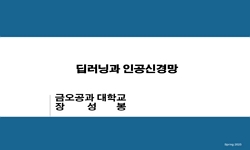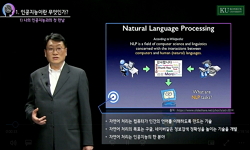In the fabrication of curved multi-display glass for automotive use, the surface roughness of the mold is a critical quality factor. However, the difficulty in detecting micro-cutting signals in a micro-machining environment and the absence of a stand...
http://chineseinput.net/에서 pinyin(병음)방식으로 중국어를 변환할 수 있습니다.
변환된 중국어를 복사하여 사용하시면 됩니다.
- 中文 을 입력하시려면 zhongwen을 입력하시고 space를누르시면됩니다.
- 北京 을 입력하시려면 beijing을 입력하시고 space를 누르시면 됩니다.

금형의 절삭가공에서 이론 모형 기반 표면거칠기 예측 결과의 실험적 모형 전환을 위한 인공신경망 구축에 대한 연구 = A Study on the Construction of an Artificial Neural Network for the Experimental Model Transition of Surface Roughness Prediction Results based on Theoretical Models in Mold Machining
한글로보기https://www.riss.kr/link?id=A108894766
- 저자
- 발행기관
- 학술지명
- 권호사항
-
발행연도
2023
-
작성언어
Korean
- 주제어
-
등재정보
KCI등재
-
자료형태
학술저널
-
수록면
1-7(7쪽)
- DOI식별코드
- 제공처
-
0
상세조회 -
0
다운로드
부가정보
다국어 초록 (Multilingual Abstract)
In the fabrication of curved multi-display glass for automotive use, the surface roughness of the mold is a critical quality factor. However, the difficulty in detecting micro-cutting signals in a micro-machining environment and the absence of a standardized model for predicting micro-cutting forces make it challenging to intuitively infer the correlation between cutting variables and actual surface roughness under machining conditions. Consequently, current practices heavily rely on machining condition optimization through the utilization of cutting models and experimental research for force prediction. To overcome these limitations, this study employs a surface roughness prediction formula instead of a cutting force prediction model and converts the surface roughness prediction formula into experimental data. Additionally, to account for changes in surface roughness during machining runtime, the theory of position variables has been introduced. By leveraging artificial neural network technology, the accuracy of the surface roughness prediction formula model has improved by 98%. Through the application of artificial neural network technology, the surface roughness prediction formula model, with enhanced accuracy, is anticipated to reliably perform the derivation of optimal machining conditions and the prediction of surface roughness in various machining environments at the analytical stage.
참고문헌 (Reference)
1 이동원 ; 이현화 ; 김진수 ; 김종수, "차량 라이트 가이드용 STAVAX 금형 가공 시 절삭조건 변화에 따른 표면 거칠기 분석에 대한 연구" 한국기계기술학회 24 (24): 1106-1112, 2022
2 이준한 ; 김종선, "사출성형공정에서 다수 품질 예측에 적용가능한 다중 작업 학습 구조 인공신경망의 정확성에 대한 연구" 한국금형공학회 16 (16): 1-8, 2022
3 이준한 ; 김종선, "사출성형공정에서 CAE 기반 품질 데이터와 실험 데이터의 통합 학습을 통한 인공지능 품질 예측 모델 구축에 대한 연구" 한국금형공학회 15 (15): 24-31, 2021
4 김종수, "볼 엔드밀의 헬릭스 각도에 따른 STD 11 소재의 표면 거칠기에 관한 연구" 한국금형공학회 17 (17): 33-39, 2023
5 이동원 ; 이현화 ; 김진수 ; 김종수, "STAVAX 강의 마이크로 밀링 중 가공 방향 및 절삭유체 분사형태에 따른 표면 거칠기 경향에 관한 연구" 한국금형공학회 17 (17): 22-26, 2023
6 Li, L., "Hyperband: A novel bandit-based approach to hyper-parameter optimization" 18 : 6765-6816, 2017
7 Hossain, M. S. J., "Artificial intelligence based surface roughness prediction modeling for three dimensional end milling" 45 (45): 1-18, 2012
8 ingma, D. P, "Adam: A method for stochastic optimization" 2014
1 이동원 ; 이현화 ; 김진수 ; 김종수, "차량 라이트 가이드용 STAVAX 금형 가공 시 절삭조건 변화에 따른 표면 거칠기 분석에 대한 연구" 한국기계기술학회 24 (24): 1106-1112, 2022
2 이준한 ; 김종선, "사출성형공정에서 다수 품질 예측에 적용가능한 다중 작업 학습 구조 인공신경망의 정확성에 대한 연구" 한국금형공학회 16 (16): 1-8, 2022
3 이준한 ; 김종선, "사출성형공정에서 CAE 기반 품질 데이터와 실험 데이터의 통합 학습을 통한 인공지능 품질 예측 모델 구축에 대한 연구" 한국금형공학회 15 (15): 24-31, 2021
4 김종수, "볼 엔드밀의 헬릭스 각도에 따른 STD 11 소재의 표면 거칠기에 관한 연구" 한국금형공학회 17 (17): 33-39, 2023
5 이동원 ; 이현화 ; 김진수 ; 김종수, "STAVAX 강의 마이크로 밀링 중 가공 방향 및 절삭유체 분사형태에 따른 표면 거칠기 경향에 관한 연구" 한국금형공학회 17 (17): 22-26, 2023
6 Li, L., "Hyperband: A novel bandit-based approach to hyper-parameter optimization" 18 : 6765-6816, 2017
7 Hossain, M. S. J., "Artificial intelligence based surface roughness prediction modeling for three dimensional end milling" 45 (45): 1-18, 2012
8 ingma, D. P, "Adam: A method for stochastic optimization" 2014
동일학술지(권/호) 다른 논문
-
금형 냉각이 Al-Mn계 다중압출 평판관의 압출 특성 변화에 미치는 영향
- 한국금형공학회
- 신영철
- 2023
- KCI등재
-
마이크로 엔드밀링에서 공구변형 가공오차 보상에 관한 연구
- 한국금형공학회
- 손종인
- 2023
- KCI등재
-
프레스 딥 드로잉 가공 시 플랜지부의 마찰진동 측정에 관한 기초연구
- 한국금형공학회
- 윤재웅
- 2023
- KCI등재
-
대형 고속프레스의 유한요소해석을 통한 진동 및 소음에 대한 연구
- 한국금형공학회
- 김승수
- 2023
- KCI등재




 ScienceON
ScienceON






